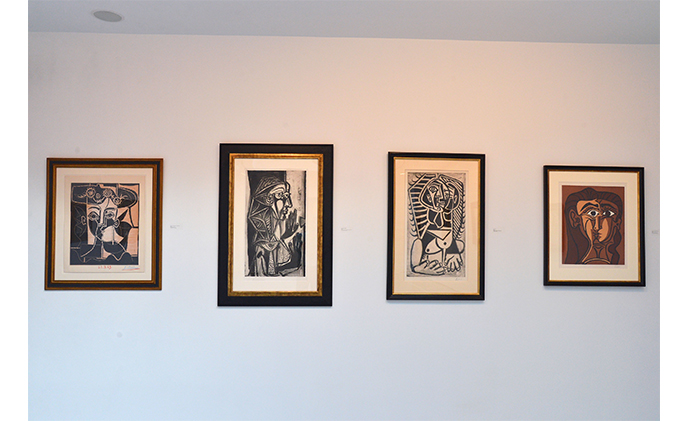Picasso: Femmes
Information
From DaVinci and Titian, to Manet and Modigliani, male artists have long been drawn, almost obsessively and immeasurably, to the bodies of their muses — wives, lovers and models. But no painter benefited from women in the service of his own art quite like Pablo Picasso. In a sort of maniacal and abusive way, his fixation on women produced a body of art that propelled his career, solidifying him as the greatest artist of the 20th century.
Many scholars see Picasso as an aggressive womanizer who frantically painted the pleasures of the flesh for his own reward and who saw women as disposable. This idea becomes invalidated when we choose to see these works as a testament to these women. They immortalize them. They preserve them. And moreover, while exposing their individuality and characteristics, they expose the greatest irony of all: their power and influence on Picasso.
Of the dozens of women with whom Picasso had affairs, eight were to become the crucial catalysts and components of Picasso’s life: Fernande Olivier, Eva Gouel, Gaby Lespinasse, Olga Khokhlova, Marie- Thérèse, Dora Maar, Françoise Gilot and Jacqueline Roque. Each signifies a different period in his oeuvre, expressing both a harmonizing and contrasting ideal that stimulated the evolution of a new visual language in the canon of art history.
This exhibition highlights and celebrates some of the women who would inspire Picasso’s life’s work. Picasso: Femmes includes celebrated portraits such as the 1936 painting of Marie-Thérèse, in which she is depicted as the delicate, adolescent beauty that ignited Picasso’s unassuming passion and dreams of youth. He achieved this effect through his use of the soft, pastel palette, commonly found in such representations of the young model.
There are three stunning yet very different portrayals of Jacqueline; his muse and second wife for the last nineteen years of his life. Picasso experimented extensively, creating more works based on this woman than any of his other lovers. As one can see in Femme Assise sur Fond Bleu-Rouge, 1956 and Portrait of Jacqueline, 1957, he is experimenting with different colors and textures, yet keeping with his signature depictions of her face in both full and profile views. Picasso had often focused on Jacqueline's features in profile, partly because of her resemblance to the right-hand figure in Delacroix's famous painting, Les femmes d'Alger. Some are more simplified and flattened than his early Cubist attempts to present simultaneous viewpoints, yet Jacqueline's strong features and dark hair make her easy to identify.
Acquired from the collection of Marina Picasso, Tête de femme is perhaps one of the most exquisite portraits, presumably of Jacqueline, from 1971. Here, the woman is gazing out from the canvas at the artist, and by extension the viewer, engaging us directly. Picasso makes a bold statement of lust through his intense and rather forceful use of paint on the canvas, accentuating her stunning hair and exaggerated eyelashes. The style can certainly be linked to the semi self-portrait musketeers done contemporaneously. These paintings of the ‘60s and early ‘70s often feature hyperactive brushwork and thick and textured areas of paint that are then juxtaposed by areas of bare canvas. It is a bold decision to expose the primed canvas, one that sanctions and validates Picasso’s work as avant-garde, while still expressing classical, romantic notions of beauty.
Also on view are carefully selected works on paper showing women, his many baigneurs, déjeuners, as well as known subjects such as Geneviève Laporte, seen in La Toilette. Inspired as always by a new love, Picasso made numerous drawings of Geneviève in pencil. Shortly after Françoise had left him in 1953, Picasso invited Geneviève to move in with him. But in a rare defeat for the artist, she declined.
Picasso also created a number of works on paper using aquatint. Though challenging, this process allows for greater fluidity of expression than traditional printmaking techniques. In the ‘50s and ‘60s, he produced some of his most motivated pieces in terms of detail and scale, as seen in La Femme a la Fenêtre. Here Picasso depicts Françoise Gilot, his lover from 1945-1953, in his signature geometric style that began in the ‘30s and was refined and reinvented over the course of the next 40 years.
This exhibition follows the gallery’s critically acclaimed presence in the Picasso market for over 35 years. This exhibition is on view in our New York City Gallery, located in the Crown Building at 730 5th ave.

